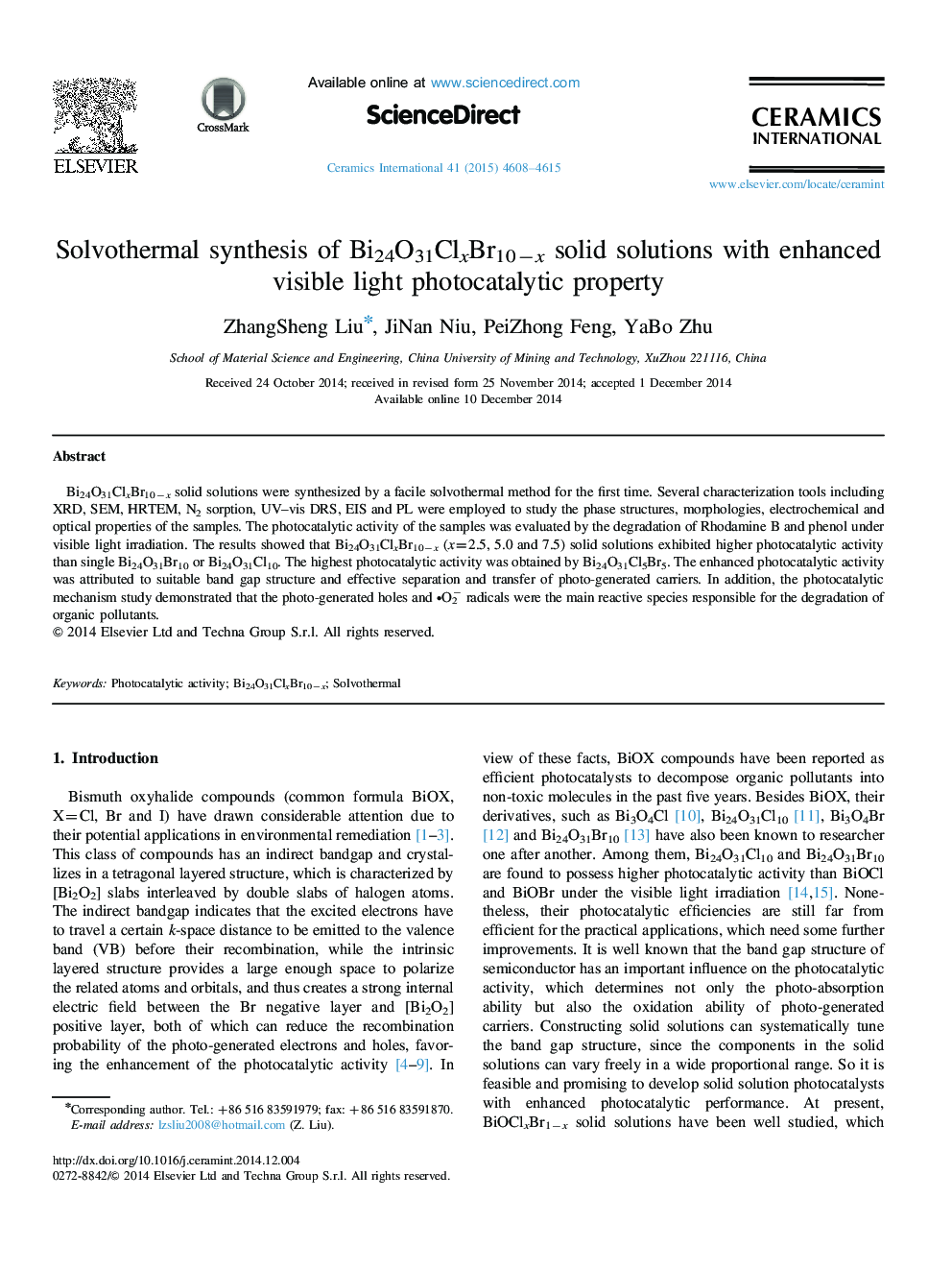| Article ID | Journal | Published Year | Pages | File Type |
|---|---|---|---|---|
| 1460337 | Ceramics International | 2015 | 8 Pages |
Bi24O31ClxBr10−x solid solutions were synthesized by a facile solvothermal method for the first time. Several characterization tools including XRD, SEM, HRTEM, N2 sorption, UV–vis DRS, EIS and PL were employed to study the phase structures, morphologies, electrochemical and optical properties of the samples. The photocatalytic activity of the samples was evaluated by the degradation of Rhodamine B and phenol under visible light irradiation. The results showed that Bi24O31ClxBr10−x (x=2.5, 5.0 and 7.5) solid solutions exhibited higher photocatalytic activity than single Bi24O31Br10 or Bi24O31Cl10. The highest photocatalytic activity was obtained by Bi24O31Cl5Br5. The enhanced photocatalytic activity was attributed to suitable band gap structure and effective separation and transfer of photo-generated carriers. In addition, the photocatalytic mechanism study demonstrated that the photo-generated holes and ∙O2− radicals were the main reactive species responsible for the degradation of organic pollutants.
